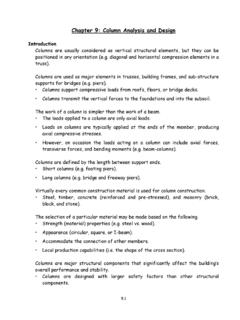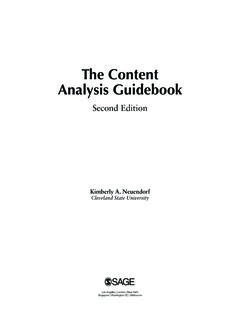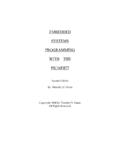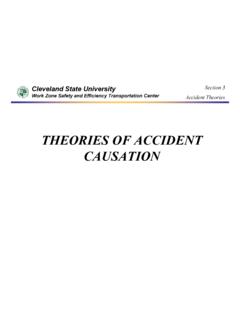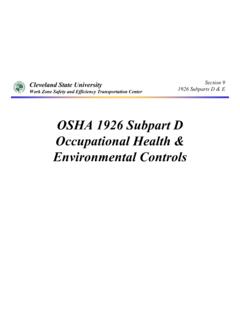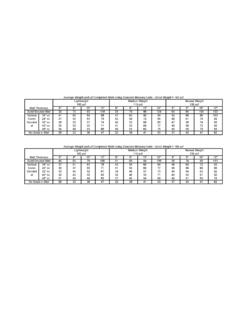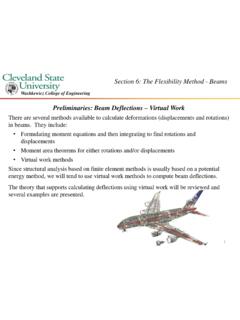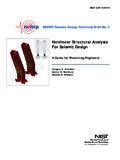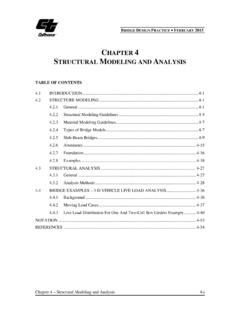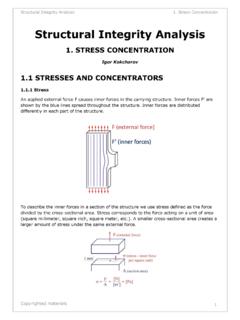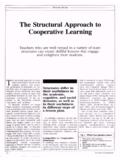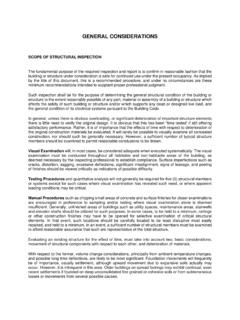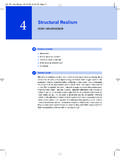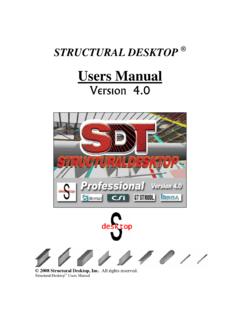Transcription of Torsional Analysis of - academic.csuohio.edu
1 Steel Design Guide SeriesTorsional Analysis ofStructured Steel MembersSteel Design Guide SeriesTorsional Analysisof StructuralSteel MembersPaul A. Seaburg, PhD, PEHead, Department of Architectural EngineeringPennsylvania State UniversityUniversity Park, PACharles J. Carter, PEAmerican Institute of Steel ConstructionChicago, ILAMERICAN INSTITUTE OF STEEL CONSTRUCTION 2003 by American Institute of Steel Construction, Inc. All rights publication or any part thereof must not be reproduced in any form without permission of the 1997byAmerican Institute of Steel Construction, rights reserved.
2 This book or any part thereofmust not be reproduced in any form without thewritten permission of the information presented in this publication has been prepared in accordance with rec-ognized engineering principles and is for general information only. While it is believedto be accurate, this information should not be used or relied upon for any specific appli-cation without competent professional examination and verification of its accuracy,suitablility, and applicability by a licensed professional engineer, designer, or publication of the material contained herein is not intended as a representationor warranty on the part of the American Institute of Steel Construction or of any otherperson named herein.
3 That this information is suitable for any general or particular useor of freedom from infringement of any patent or patents. Anyone making use of thisinformation assumes all liability arising from such must be exercised when relying upon other specifications and codes developedby other bodies and incorporated by reference herein since such material may be mod-ified or amended from time to time subsequent to the printing of this edition. TheInstitute bears no responsibility for such material other than to refer to it and incorporateit by reference at the time of the initial publication of this in the United States of AmericaSecond Printing: October 2003 2003 by American Institute of Steel Construction, Inc.
4 All rights publication or any part thereof must not be reproduced in any form without permission of the OF CONTENTS1. Introduction .. 12. Torsion Shear Resistance of a Cross-Section toa Torsional Avoiding and Minimizing Selection of Shapes for Torsional Loading .. 53. General Torsional Torsional Torsional Properties .. Torsional Constant J .. Other Torsional Properties for Torsional Functions .. 94. Analysis for Torsional Stresses on I-, C-, and Z-ShapedOpen Cross-Sections .. Pure Torsional Shear Stresses.
5 Shear Stresses Due to Warping .. Normal Stresses Due to Warping .. Approximate Shear and NormalStresses Due to Warping on Torsional Stress on Single Angles .. Torsional Stress on structural Tees .. Torsional Stress on Closed andSolid Cross-Sections .. Elastic Stresses Due to Bending andAxial Load .. Combining Torsional Stresses WithOther Open Cross-Sections .. Closed Specification Load and Resistance Factor Design .. Allowable Stress Design .. Effect of Lateral Restraint atLoad Torsional Serviceability 185.
6 Design Examples .. 19 Appendix A. Torsional Properties .. 33 Appendix B. Case Graphs of Torsional 54 Appendix C. Supporting General Equations for 6 and its Derivatives .. Constant Torsional Moment .. Uniformly Distributed Linearly Varying Torsional Boundary Conditions .. Evaluation of Torsional General Solution .. Torsional Constant J for Solutions to Differential Equations forCases in Appendix B .. 110 References .. 113 Nomenclature .. 115 2003 by American Institute of Steel Construction, Inc.
7 All rights publication or any part thereof must not be reproduced in any form without permission of the 1 INTRODUCTIONThis design guide is an update to the AISC publication Tor-sional Analysis of Steel Members and advances further thework upon which that publication was based: BethlehemSteel Company's Torsion Analysis of Rolled Steel Sections(Heins and Seaburg, 1963). Coverage of shapes has beenexpanded and includes W-, M-, S-, and HP-Shapes, channels(C and MC), structural tees (WT, MT, and ST), angles (L),Z-shapes, square, rectangular and round hollow structuralsections (HSS), and steel pipe (P).
8 Torsional formulas forthese and other non-standard cross sections can also be foundin Chapter 9 of Young (1989).Chapters 2 and 3 provide an overview of the fundamentalsand basic theory of Torsional loading for structural steelmembers. Chapter 4 covers the determination of torsionalstresses, their combination with other stresses, Specificationprovisions relating to torsion, and serviceability issues. Thedesign examples in Chapter 5 illustrate the design process aswell as the use of the design aids for Torsional properties andfunctions found in Appendices A and B, respectively.
9 Finally,Appendix C provides supporting information that illustratesthe background of much of the information in this design examples are generally based upon the provi-sions of the 1993 AISC LRFD Specification for StructuralSteel Buildings (referred to herein as the LRFD Specifica-tion). Accordingly, forces and moments are indicated with thesubscript u to denote factored loads. Nonetheless, the infor-mation contained in this guide can be used for design accord-ing to the 1989 AISC ASD Specification for structural SteelBuildings (referred to herein as the ASD Specification) ifservice loads are used in place of factored loads.
10 Where thisis not the case, it has been so noted in the text. For single-anglemembers, the provisions of the AISC Specification for LRFDof Single-Angle Members and Specification for ASD of Sin-gle-Angle Members are appropriate. The design of curvedmembers is beyond the scope of this publication; refer toAISC (1986), Liew et al. (1995), Nakai and Heins (1977),Tung and Fountain (1970), Chapter 8 of Young (1989),Galambos (1988), AASHTO (1993), and Nakai and Yoo(1988).The authors thank Theodore V. Galambos, Louis F.
